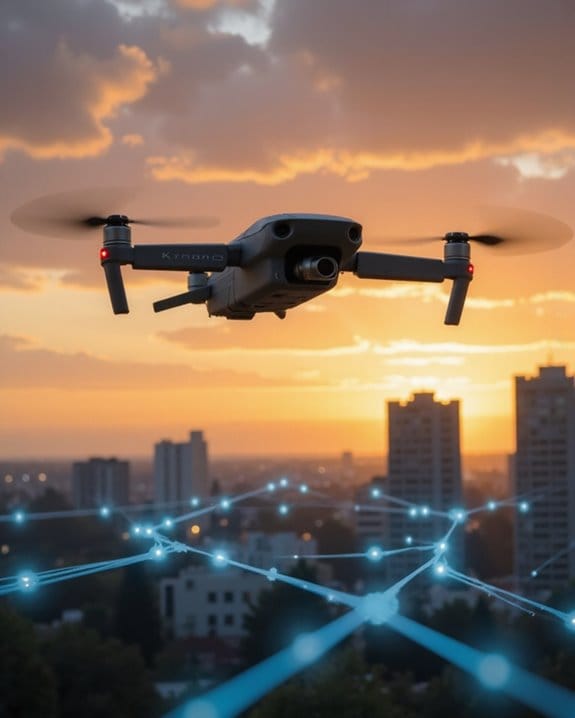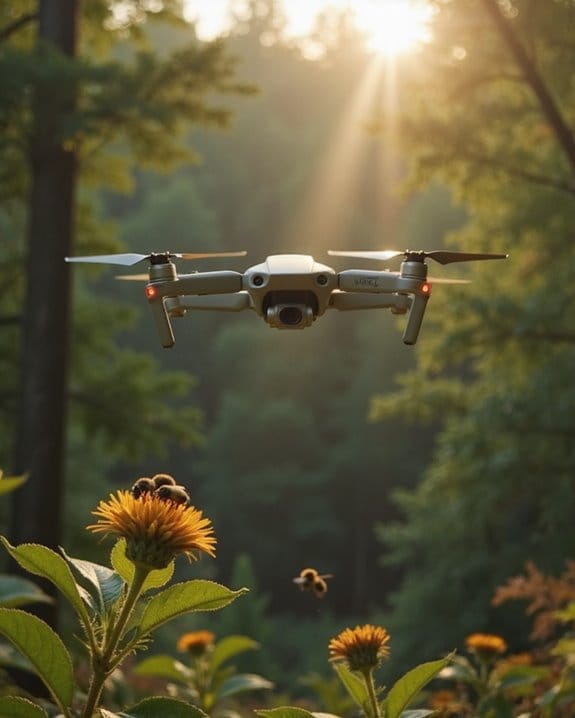Drones and AI are advancing fast, but don’t expect pilots to disappear soon. You’ll see automation handle most routine tasks in the cockpit, yet human judgment is essential for emergencies and unexpected situations. AI systems strictly follow programming—great for consistency, not so much for improvisation. Safety regulators still require human oversight, and most passengers just aren’t ready for pilotless planes. If you want to know how these trends could reshape your next flight, keep going for key details.
Key Takeaways
- Human pilots remain essential for oversight and crisis management, as current AI lacks ethical judgment and adaptability in emergencies.
- Regulatory bodies like the FAA require human supervision of autonomous aircraft, delaying the full replacement of pilots for at least several years.
- Passengers currently distrust fully automated flights due to concerns about hacking, system failures, and robots’ inability to improvise during emergencies.
- Hybrid solutions, where AI assists human pilots as co-pilots, are being adopted to gradually introduce automation while maintaining safety.
- High development and certification costs, along with strict regulations, slow the adoption of pilotless commercial flights despite advances in drone technology.
The Evolution of Drones in Aviation
How did drones go from secret military tools to everyday gadgets you might see at a park? The story starts in 1917, when the first recognized drone sparked a revolution in aviation. Initially, drones were all about military missions—think reconnaissance and air strikes. But with technological advancements, drone technology evolved rapidly. Let’s break down their journey:
Key Milestones in Drone Evolution:
- Military Era: Large, robust, focused on aerial coverage and combat.
- Miniaturization: As drones shrank, their versatility soared.
- Consumer Boom: Companies like DJI introduced drones for photography and filming.
Today, you’ll find drones used for everything from monitoring wildlife to inspecting infrastructure. If you’re a hobbyist, a compact camera drone fits your needs. For commercial surveillance, industrial-grade drones deliver enhanced performance. Military models like the RQ-11 Raven UAV, known for its lightweight 2kg design and tactical use, exemplify the integration of military-grade specifications into drone development.
How Automation Is Transforming the Flight Deck
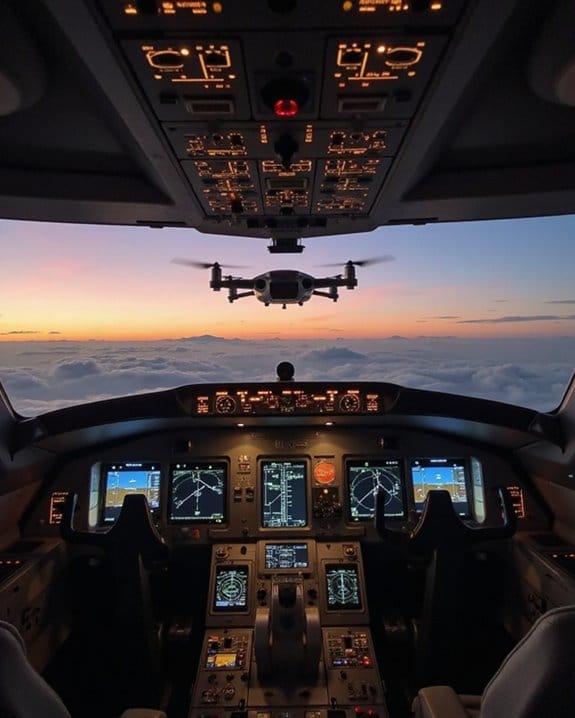
As drones have reshaped aviation on the ground, the flight deck in commercial aircraft has quietly undergone its own technological revolution. You’ll notice automation has steadily reduced crew sizes—from five in the 1970s to just two pilots today—as autonomous systems now handle navigation and engine monitoring.
Key Transformations:
- Autopilot: Modern systems manage 90-95% of a flight, controlling speed, altitude, and route.
- AI Tools: Machine learning assists pilots with real-time fault detection, flagging engine issues before they escalate.
- Robotic Pilots: Innovations like DARPA’s robotic co-pilot can Replace routine operations, potentially paving the way for single-pilot cockpits.
Recommendation:
If you’re a pilot or airline operator, embrace these automated systems—they boost efficiency and safety. However, don’t worry: while automation advances, human pilots remain essential for oversight and judgment. The integration of autonomous flight controls in urban air mobility highlights the growing role of automation in managing complex flight environments.
Key Differences Between Human Pilots and AI Systems
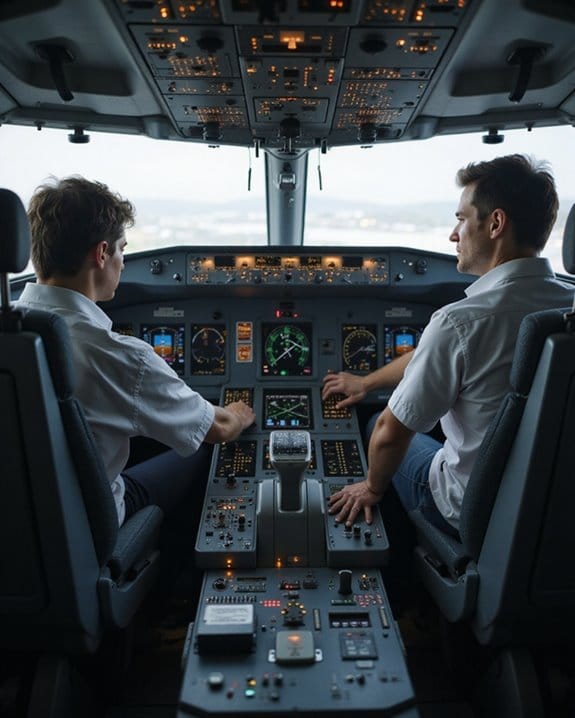
Even with AI’s rapid advances in aviation, there’s still a fundamental gap between what machines can do and what human pilots bring to the cockpit.
Key Differences: Human Pilots vs. AI Systems
- Intuition & Adaptability: Human pilots rely on intuition and creativity to manage unexpected crises—think engine failures or sudden storms. Artificial intelligence, in contrast, sticks to its programming and struggles with ethical judgment calls.
- Error Rates: Robotic pilots in autonomous flight scenarios tend to make more mistakes in complex situations, despite their data-processing strengths.
- Manual Intervention: Only human intervention allows you to override autopilot, especially during emergencies.
- Security & Sensory Input: AI is hackable and can suffer system failures. Human pilots, however, use sensory awareness and direct action—proving people still edge out silicon, at least for now.
- Additionally, advanced AI systems in drones utilize intelligent flight paths and stabilization technologies to improve autonomous operation, yet these do not fully replicate human decision-making in dynamic environments.
Military Applications and Lessons for Commercial Aviation
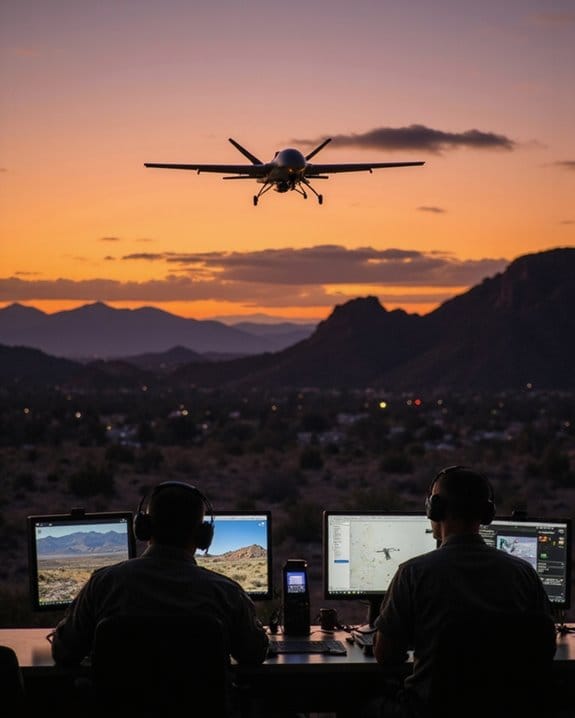
Surprisingly, some of the boldest advances in autonomous flight didn’t start in commercial airlines—they took off on military runways. If you look at unmanned aircraft like military drones, they’ve been achieving safety and efficiency far longer than you might expect. Here’s what military experience teaches you about the future of commercial aviation:
Product Overview:
- Unmanned aircraft: Used for decades in military operations, minimizing human risk.
- Autonomous vehicles: Tested by the U.S. Air Force since 1947, proving reliability.
Detailed Analysis:
- Robot pilots, like DARPA’s prototype, reveal how iterative training can reduce error rates over time.
- Aurora’s robotic systems hint that drones will replace second pilots, cutting costs.
Recommendations:
- For commercial cargo, autonomous vehicles offer safer and more efficient delivery.
- Human oversight remains critical, but lessons from military drones pave the runway for a future where drones will replace some pilot roles.
The Role of AI in Enhancing Flight Safety
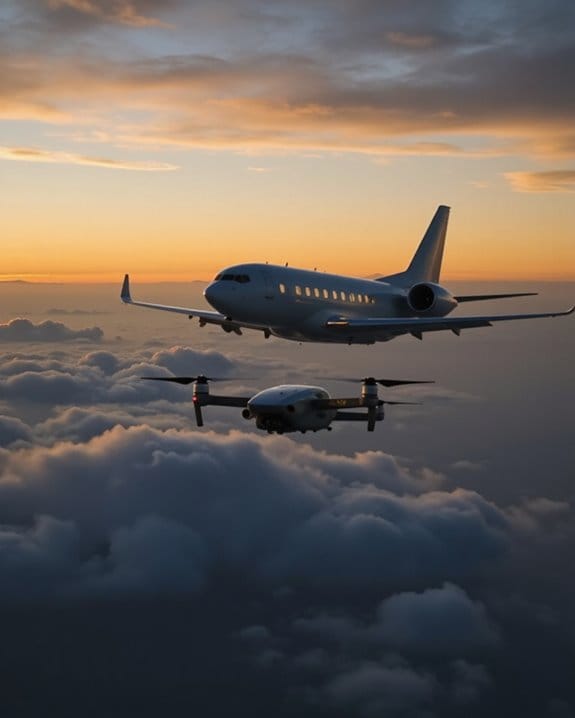
Building on the military’s successful use of autonomous systems, AI now plays a central role in making commercial flight safer, smarter, and more efficient. AI is revolutionizing aviation by reducing human error, boosting response to urgent situations, and improving reliability. For instance:
- Autopilot systems, powered by AI, precisely manage speed and altitude, minimizing the chances of mistakes from fatigue.
- Machine learning monitors aircraft health, diagnosing faults in real-time to prevent incidents before they escalate.
- Advanced sensors detect wind shear and weather threats, allowing you to avoid surprises.
Drones are already demonstrating these capabilities in real-world scenarios, and fully autonomous systems are on the horizon. For airlines, AI means safer, more predictable flights. If you value operational safety, AI-driven enhancements are quickly becoming indispensable tools in modern cockpits.
Challenges Facing Full Pilotless Flight Adoption

How ready are we really for skies filled with pilotless planes? The aviation sector faces several hurdles before you’ll see commercial flights without human pilots in the cockpit. Here’s what stands in the way:
Key Challenges
- Cost Savings: AI-controlled aircraft still cost more than traditional planes. Development, certification, and compliance eat into any promised cost savings.
- Need for Pilots: Regulators, like the FAA, require remote human control for drones, emphasizing the ongoing need for pilots.
- Safety & Trust: Passengers aren’t yet comfortable trusting autonomous planes. Surveys show most people hesitate to fly without human oversight.
- Technology: Vulnerabilities like hacking and system errors persist. Robotic pilots currently have higher error rates than humans.
Until these barriers fall, full pilotless flight remains more science fiction than standard practice.
Economic and Regulatory Implications of Drone Pilots
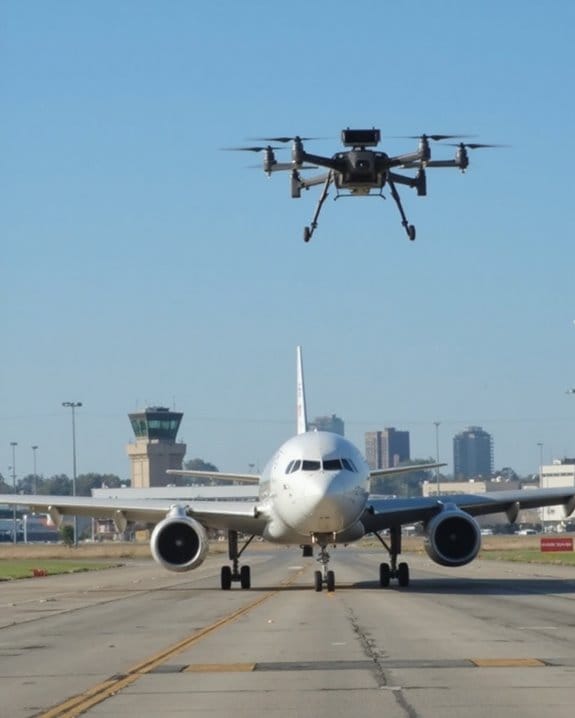
When it comes to swapping out commercial pilots for drones, the economics and regulations are anything but straightforward. You might expect major savings if airlines employ robots to fly, but replacing a commercial pilot isn’t as cheap as it sounds. Here’s why:
Economic Barriers:
- Upfront costs are steep—think billions, not millions—to develop and certify autonomous systems. It’s like swapping a bike for a spaceship.
- Initial compliance and testing, mandated by the FAA and ICAO, add expenses before robots replace commercial crews.
Regulatory Hurdles:
- Strict BVLOS (Beyond Visual Line of Sight) rules require extra safety measures and certifications.
- Approval processes can drag on, delaying cost benefits.
Recommendation:
If you’re in the airline business, prepare for significant investments before expecting crew cost reductions from replacing pilots.
Passenger Perceptions and Trust in Autonomous Flight

Ever wondered why, despite advances in drone technology, passengers still hesitate to board a pilotless plane? The aviation industry faces a significant trust hurdle. Here’s why AI or robots replace human commercial pilots only slowly:
Key Factors Influencing Passenger Trust:
- Human Judgment: Many believe robots can’t match a human’s ability to make ethical decisions or improvise during emergencies.
- AI Vulnerabilities: Concerns about hacking or system failures make fully automated flights seem riskier.
- Regulatory Standards: Authorities like the FAA are demanding stricter oversight, knowing public acceptance is essential.
Current Solutions:
– Co-pilot Robots: Mixing humans and AI is seen as a bridge—automation with a “human safety net.”
Bottom line: Until AI earns your trust, pilots aren’t clocking out just yet—autopilot jokes aside.
Emerging Uses: Medical, Shipping, and Emergency Response

While some travelers might not be ready to hand over the cockpit keys to a drone just yet, these autonomous aircraft are already revolutionizing fields where speed and precision can’t wait for public sentiment to catch up.
Product Overview:
- Medical Supply Delivery: Drones are transporting blood and medicines across Italy, reaching remote areas faster than any plane without a runway.
- Shipping: Amazon’s drones handle thousands of daily deliveries. They cut fuel use and emissions, slashing operational costs by up to 50% compared to crewed aircraft.
- Emergency Response: Unmanned drones deliver supplies to warzones and evacuate patients, reducing human risk and response times.
Analysis:
Drones won’t completely replace pilots in commercial flights overnight, but these emerging uses set the stage for the future of aviation—one where you might see a plane without anyone up front, and that’s no joke.
The Future Role of Human Pilots in a Drone-Driven World
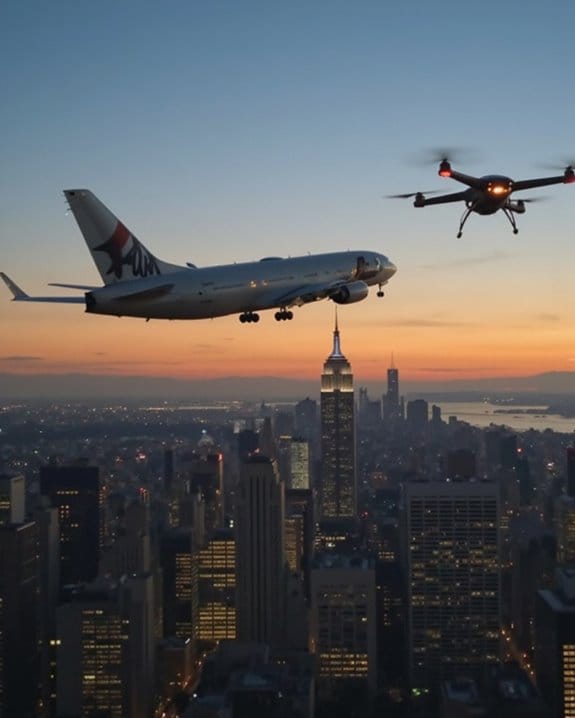
How will your role as a pilot change when drones start dominating the skies? As commercial drones become more prevalent in air travel around the world, your job will evolve from hands-on flying to supervising automated systems. Expect responsibilities to include:
- Mission monitoring: Oversee drone operations, ready to intervene if AI falters.
- Process management: Guarantee seamless integration of automation, focusing on customer value.
- Critical decision-making: Retain authority to disable autopilot during unpredictable situations—AI’s not great with surprises (yet).
For at least the next Poli7 years, FAA regulations and public trust will require human oversight. You’ll likely work alongside AI as a co-pilot, enhancing safety and efficiency. While the cockpit of the future might be smaller, your expertise will remain essential—and you won’t be replaced by a robot with a pilot’s hat just yet.
Frequently Asked Questions
Will Pilots Be Replaced With Drones?
You might think pilots will be replaced with drones soon, but that’s unlikely. Current technology still makes more errors than humans, and regulations, costs, and trust issues mean you’ll see human pilots in commercial cockpits for years.
What Pilots Make $500,000 a Year?
You’ll find that only the most senior airline captains, especially flying international routes for major carriers, or corporate pilots working for wealthy clients, can make $500,000 a year through salary, bonuses, flight hours, and incentives.
What Is the Future of Commercial Pilots?
Imagine yourself guiding a jet through clouds, but alongside an AI co-pilot. You won’t vanish—you’ll shift roles, supervising smart systems, making high-stakes decisions, and ensuring passenger safety as technology evolves. Your expertise remains irreplaceable.
What Is the Future of Drone Pilots?
You’ll find your role as a drone pilot evolving—shifting from manual flying to supervising advanced autonomous systems. You won’t just fly; you’ll manage missions, guarantee compliance, and leverage AI, making your expertise more valuable than ever.


